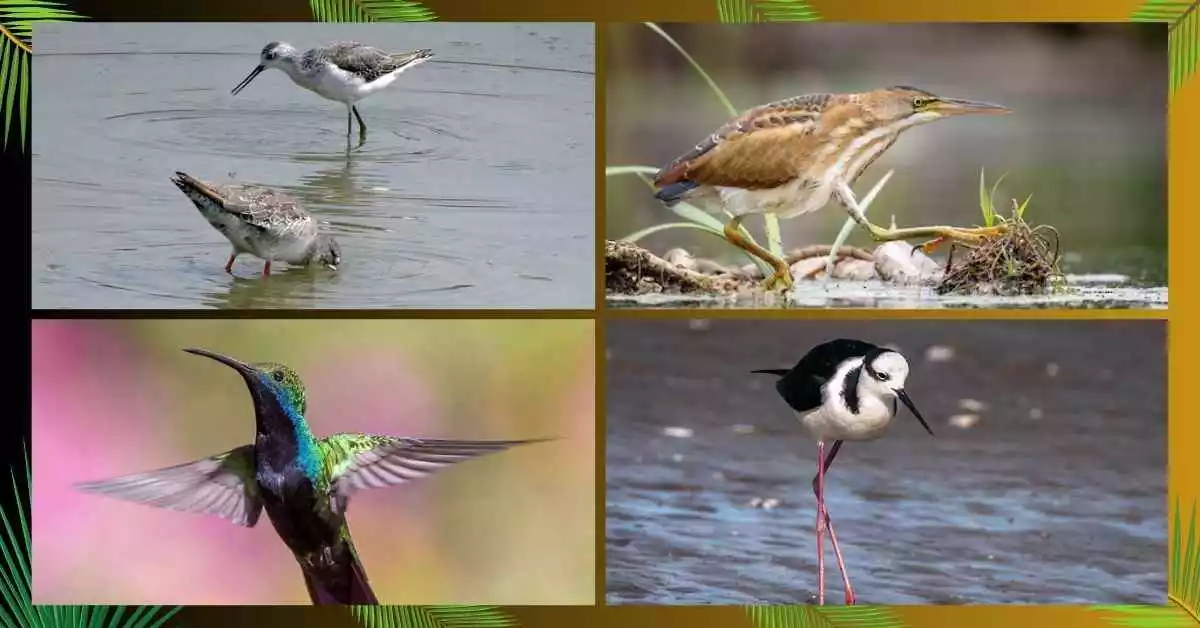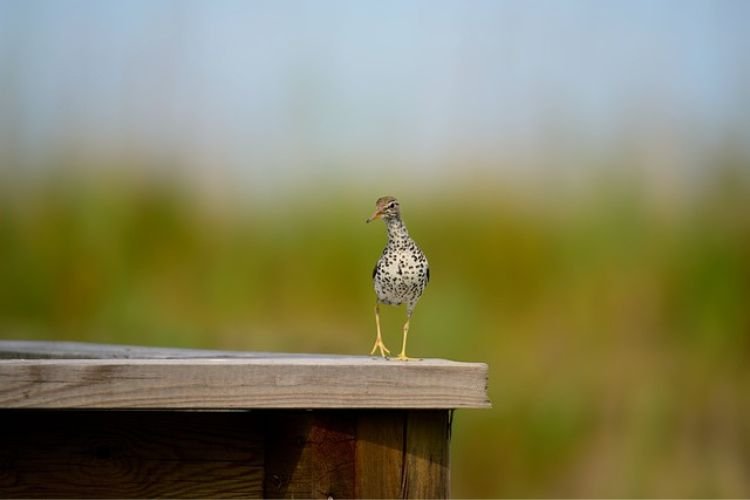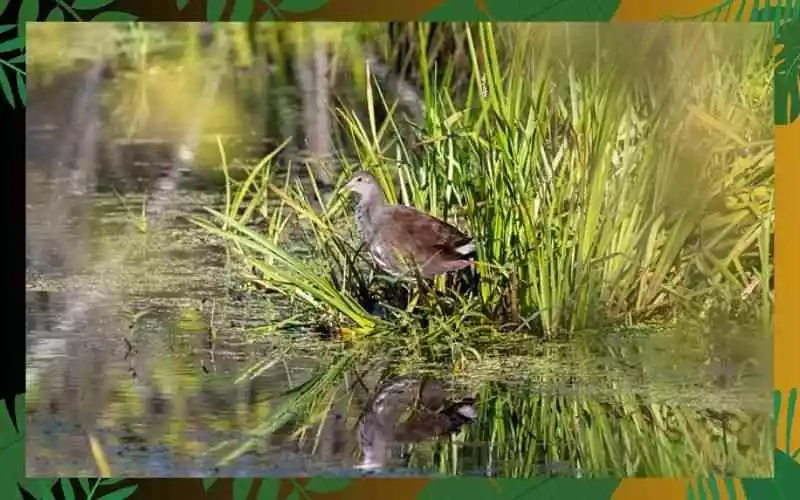
I feel good about telling you that many small birds with long necks live in our world. Some have long legs, tails, and breaks, and some have long necks.
Today, we will discuss small birds with long necks. I chose seven such birds, which you can call the top seven.
Small Birds with Long Necks
Discover the top 7 small birds with long necks, including the Hummingbirds, Spotted Sandpiper, Solitary Sandpiper, and Wilson’s Snipe. Learn about their habitats, behavior, and unique features.
- Hummingbirds
- Spotted Sandpiper
- Solitary Sandpiper
- Least Bittern
- Common Gallinule
- Black-necked Stilt
- Wilson’s Snipe
So, whether you’re a birdwatcher or just looking to learn something new, check out this article to discover more about these fascinating small birds with long necks.
1. Small Birds with Long Necks: Hummingbirds

These small birds with long necks are mostly found in the Americas, from Alaska to Tierra Del Fuego. Over 300 hummingbird species live in this world. The smallest (bee hummingbird 2.6 grams) to the largest species (giant hummingbird 24 grams).
One of the unique facts of hummingbirds is their ability to hover in mid-air. They can also fly backward and upside down.
Hummingbirds are also known for their colorful feathers, which can appear to change color depending on the angle of the light.
Males have more vibrant colors than females, which helps them attract mates during the breeding season.
Hummingbirds love to eat nectar from flowers. They also eat small insects, such as mosquitoes and fruit flies, to supplement their diet with protein.
Here are some key facts about hummingbirds:
- Size: The smallest hummingbirds are about the size of a bumblebee.
- Weight: Most hummingbirds weigh less than a penny.
- Diet: Nectar and small insects.
- Habitat: Forests, gardens, and other areas with flowering plants.
- Behavior: Hovering, flying backward
- Migration: Many hummingbirds are migratory, and they travel long distances to find food and nesting sites.
Hummingbirds can flap their wings up to 80 times per second, which allows them to hover and fly backward. Hummingbirds are found throughout the Americas, from Canada to Argentina. There are over 300 different species of hummingbirds with various colors and sizes.
Related: Top 7 Small Birds with Long Beaks
2. Small Birds with Long Necks: Spotted Sandpiper

These small birds with long necks are found in North and Central America. It has a spotted pattern on its chest and belly.
The Spotted Sandpiper is a small bird with a long neck and bill. It loves staying in North America’s streams, rivers, and lakes and Is easily spotted in these areas.
These birds have unique bobbing behavior, which helps them find food. They are also very good runners and excellent swimmers. They often run along the water’s edge or wade into the shallows.
Their main diet includes insects and small fish. These migratory birds spend their winter season in South America and return to North America in the breeding season.
Here are some key facts about Spotted Sandpipers:
- Size: About 6-7 inches long
- Weight: About 2 ounces
- Coloration: Brown with white spots on the back, white underside
- Habitat: Streams, rivers, lakes
- Diet: Insects, small fish
- Behavior: Bobbing, running, swimming
- Migration: Migratory, winters in South America
Spotted Sandpipers build their nests on the ground near water. These small birds with long necks can grow up to 7 inches.
Related: Top 7 Small Birds with Long Legs
3. Small Birds with Long Necks: Solitary Sandpiper

These are another type of small birds with long necks. This species is found across North and South America. It looks the same as the Spotted Sandpiper but lacks the spotted pattern on its chest and belly.
They are perfect and solitary birds, so they are named “Solitary Sandpipers.” You can also spot these birds in small groups. This little bird is known for bobbing its head up and down. Its long bill probes the mud for insects and small aquatic creatures.
Solitary Sandpipers are migratory birds that spend their winters in South America, Central America, and the southern United States. In the breeding season, they return to North America to breed and build their nests on the ground near water.
Here are some key facts about Solitary Sandpipers:
- Size: About 6-7 inches long
- Weight: About 2 ounces
- Coloration: Grayish-brown with white spots on the back, white underside
- Habitat: Streams, rivers, lakes
- Diet: Insects, small aquatic creatures
- Behavior: Solitary, bobbing, foraging
- Migration: Migratory, winters in South America
It feeds on various small aquatic animals, including insects, crustaceans, and small fish. Solitary sandpipers love to stay near bodies of water, such as streams, rivers, and lakes.
4. Small Birds with Long Necks: Least Bittern

These small birds with long legs are found in wetlands throughout North and South America. They have a long neck, which they often hold in an S-shaped curve.
The Least Bittern is a small bird with long necks. It is the smallest heron species in the world. Its feathers are a mix of brown, buff, and black. Its slim body allows it to move easily through dense vegetation.
| Feature | Description |
|---|---|
| Size | 11 to 14 inches long. |
| Weight | 1.8 to 3.4 ounces. |
| Wingspan | 16 to 18 inches. |
| Color | Brown, buff, and black feathers. |
| Body | Active in the early morning and late evening. |
| Legs and Toes | Long legs and toes for gripping reeds. |
| Diet | Eats small fish, insects, frogs, and crustaceans. |
| Habitat | Lives in marshes with thick reeds and cattails. |
| Activity | Active in early morning and late evening. |
| Calls | Makes soft, cooing sounds. |
| Nesting | Builds nests in thick vegetation near water. |
| Migration | Migrates to Central and South America in winter. |
| Unique Fact | Stretches neck to blend in with reeds when threatened. |
The Least Bittern can grow to 11 to 14 inches long and weigh up to 3.5 ounces. Its wingspan is almost 18 inches. The Least Bittern eats small fish, insects, and frogs.
It loves to stay in marshes with thick reeds. It is most active in the early morning and late evening. It builds its nests in thick vegetation near the water.
In winter, they migrate to South and Central America. They also make cooing-like soft sounds.
5. Small Birds with Long Necks: Common Gallinule

These small birds with long necks are also known as the Common Moorhen. The Common Gallinule is a small waterbird.
| Feature | Description |
|---|---|
| Other Name | Also known as the Common Moorhen. |
| Size | About 12 to 15 inches long. |
| Weight | Weighs between 7 to 14 ounces. |
| Wingspan | Wingspan is about 21 to 24 inches. |
| Bill | Has a red bill. |
| Neck | Long neck. |
| Color | Dark body with white stripes on the sides. |
| Call | Known for its loud, clucking call. |
| Habitat | Found in wetlands, including marshes, swamps, and ponds. |
| Diet | Eats aquatic plants, seeds, insects, and small fish. |
| Range | Found throughout the Americas. |
| Migration | Resident bird, does not migrate. |
This bird can grow up to 15 inches and has a wingspan of 24 inches. It has a red bill and a long neck. Its dark body has white stripes on the sides.
These small birds with long necks have a red bill and a long neck. They are found throughout the Americas and are known for their loud, clucking call.
The Common Gallinule is a resident bird. They can be found in various wetland habitats, including marshes, swamps, and ponds.
They love to eat various aquatic plants and animals, including seeds, insects, and small fish. It has a loud sound, like clucking.
6. Small Birds with Long Necks: Black-necked Stilt

This Black-necked Stilt striking bird has long, thin legs and a long, thin neck. They use their long neck to feed on small aquatic animals.
| Feature | Description |
|---|---|
| Size | About 13 to 15 inches long. |
| Weight | Weighs around 5 to 7 ounces. |
| Wingspan | Wingspan is about 28 to 30 inches. |
| Color | Black neck and back, white underparts. |
| Bill | Long, thin, and black bill. |
| Legs | Very long, pink legs. |
| Call | Known for its sharp, high-pitched call. |
| Habitat | Found in shallow wetlands, salt flats, and marshes. |
| Diet | Eats small fish, insects, crustaceans, and aquatic invertebrates. |
| Range | Found across the Americas, especially in coastal regions. |
| Migration | Migrates to warmer regions during winter. |
| Unique Fact | Has one of the longest legs relative to body size among birds. |
These small birds with long necks can grow up to 15 inches long, weigh up to 7 ounces, and have a wingspan of 30 inches. They have a black neck and back with white underparts.
It also has a long black bill and pink legs. These birds migrate to warmer regions during winter. Despite its small size, it has the longest legs.
It is found throughout North and South America. It is known for its distinctive black and white plumage.
The Black-necked Stilt is a resident bird found in various wetland habitats, including salt ponds, marshes, and mudflats.
These species of small birds with long necks love to eat various small aquatic animals, including insects, crustaceans, and small fish.
7. Small Birds with Long Necks: Wilson’s Snipe

Wilson’s Snipes are small birds with long necks that can be easily found across North and South America. They have a long, straight bill and long neck.
| Feature | Description |
|---|---|
| Size | 10 to 11 inches long. |
| Weight | 3 to 5 ounces. |
| Wingspan | 16.5 to 18 inches. |
| Color | Brown with dark stripes on the back and head. |
| Bill | Long and straight. |
| Legs | Short, yellow-green legs. |
| Call | Makes a winnowing sound when flying. |
| Habitat | Lives in wetlands, marshes, and wet meadows. |
| Diet | Eats insects, worms, and small invertebrates. |
| Range | Found in North America, especially in wetland areas. |
| Migration | Migrates to southern U.S., Central America, and northern South America in winter. |
| Unique Fact | Flies in an erratic pattern to avoid predators. |
These small birds with long necks can grow up to 11 inches long and have a wingspan of up to 18 inches. They have a brown body with dark stripes on their back and head. They make a winnowing sound while flying.
They use their long neck to search for food in wetlands and marshes. It is known for its distinctive “winnowing” call, which it produces during courtship displays.
The Wilson’s Snipe is a migratory bird that breeds in northern regions and winters in the southern United States, Central America, and South America.
Wilson’s snipes are found in North America and love to eat various small aquatic animals, including insects, worms, and small crustaceans.
Conclusion:
In conclusion, small birds with long necks are tiny but mighty in their personalities. These birds have fascinating features and habits that glimpse the natural world. Whether you’re an avid birdwatcher or just starting, these top 7 small birds with long necks will surely delight and inspire you. So, the next time you’re outdoors, keep your eyes peeled for these feathered friends and get ready to be amazed!


